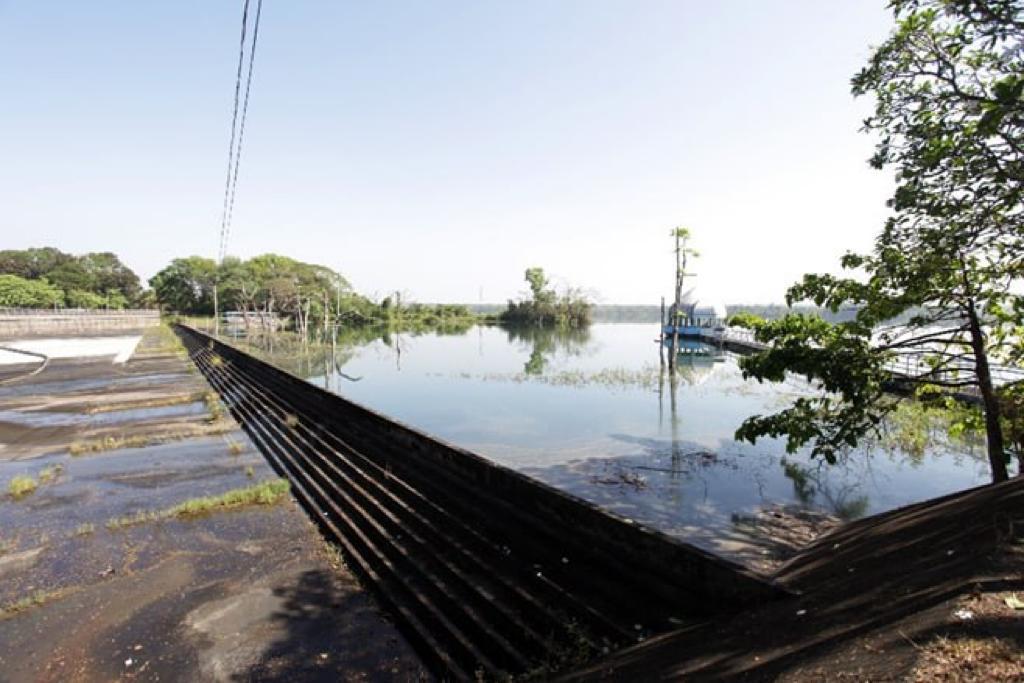Manila Water boosts disaster resilience capabilities via ‘Emergency Preparedness Framework’

The spillway of the La Mesa Dam Portal was rehabilitated to stand the impacts of climate change such as stronger earthquakes and typhoons. As water is one of the most essential requirements in humanitarian response, Manila Water has been continuously preparing and improving its capabilities to ensure the availability of water supply to its customers and stakeholders in the public and private sectors during emergencies. Contributed photo
As the Philippines celebrate National Disaster Resilience Month this July, Manila Water is readying its Emergency Preparedness Framework to ensure availability of water supply to its customers and stakeholders in the public and private sector even during emergencies.
Manila Water recognized that water is one of the most essential requirements in survival and humanitarian response, that is why it gives priority to being able to adapt to the changes in the environment brought about by natural disasters and climate change such as destructive earthquakes that causes damage to property, stronger typhoons that bring floods and landslides, and more intense El Niño phenomenon that causes drought and depletion of water supply.
Through the Emergency Preparedness Framework, the water company has been continuously preparing and improving its capabilities anchored on three pillars: Damage Prevention and Control, Preservation and Augmentation, and Rapid Recovery.
Damage Prevention and Control
Under Damage Prevention and Control, Manila Water has set various measures to ensure minimal to no damage to its resources and facilities, based on determined threats.
READ: Manila Water expands customer base to 7.6 million
To avoid dam breaks and flash floods in the La Mesa Dam portal, Manila Water has implemented rehabilitation of the dam’s spillway, extension of the retaining wall, and dam instrumentation. La Mesa Dam serves as a strategic reserve for use of the two concessionaires during emergencies and functions as a reliability dam to provide short-term supply.
Floating pumps were also placed in La Mesa Dam to monitor turbidity in raw water especially during the rainy season.
For flooding brought about by heavy rains and typhoons, Manila Water has also constructed storm drains and implemented flood proofing in all its facilities in the East Zone especially those located in flood prone areas such as in Marikina City. Flood emergency equipment such as folding boats and floating docks were also procured and deployed.
To prevent pipe breakage in main and secondary water lines during disasters, Manila Water has replaced PVC pipes with HDPE pipes which are more resistant to damage and fatigue. This effort has likewise contributed in keeping Manila Water’s non-revenue water at an average of 13%, which enables the company to maintain 24/7 water supply to its customers.
READ: Manila Water’s non-revenue water now on par with developed countries
Manila Water employees are also trained regularly on first aid, water search and rescue (WASAR), chemical spill and standard emergency protocols.
Preservation and Augmentation
In worst case scenarios threatening Manila Water’s main sources of raw water, the company has standby reservoirs with a total capacity of 437 million capacity, which can provide 4.78 days of water supply to its customers in the East Zone at an allocation of 15 liters of water usage per person, per day. Aside from this, existing deep wells are also being maintained, which can provide 118 million liters per day (MLD), and emergency online reservoirs that has a holding capacity of 50-100 cubic meters of water and capable of providing potable water to up to 10,000 evacuees for three days.
Manila Water also has four mobile treatment plants that can treat brackish and flood water at 3,500-4,000 liters per hour.
READ: Manila Water’s low NRW is a major factor in sustaining 24/7 supply to east zone customers
Rapid Recovery
To support recovery of operations after a disaster, as well as to respond to concerns from customers and stakeholders, Manila Water has procured contingency vehicles and equipment such as mobile Command Center, mobile restrooms, ambulance, 4×4 rescue vehicles, amphibious rescue vehicles, among others. Contingency spare parts were also procured and kept on all facilities, as well as mobile and standby generator sets and fuel storage tanks.
Likewise, under Manila Water’s social development arm Manila Water Foundation is the Agapay: WASH in Emergencies program, a disaster response program that distributes bottled drinking water and deploys water tankers or mobile treatment plants to areas affected by typhoons and disasters to address water supply needs for drinking, bathing, and other hygiene-related activities. The program also provides sanitation facilities for affected families and individuals who were displaced from their homes and communities.
READ: Manila Water bares plans to mitigate effects of El Niño in non-East Zone